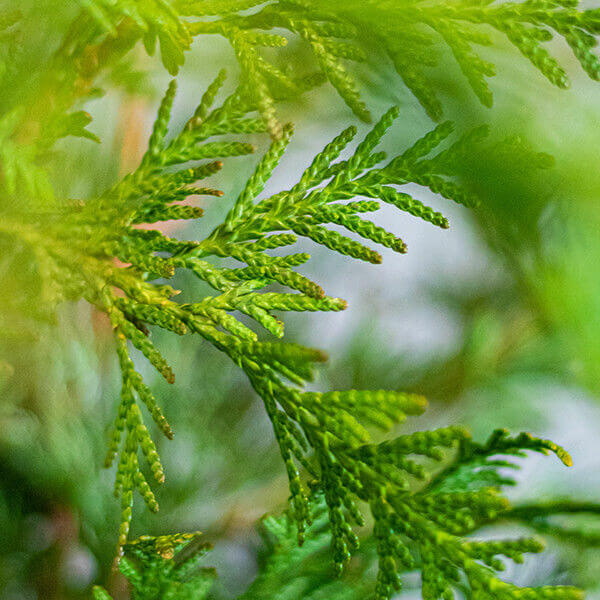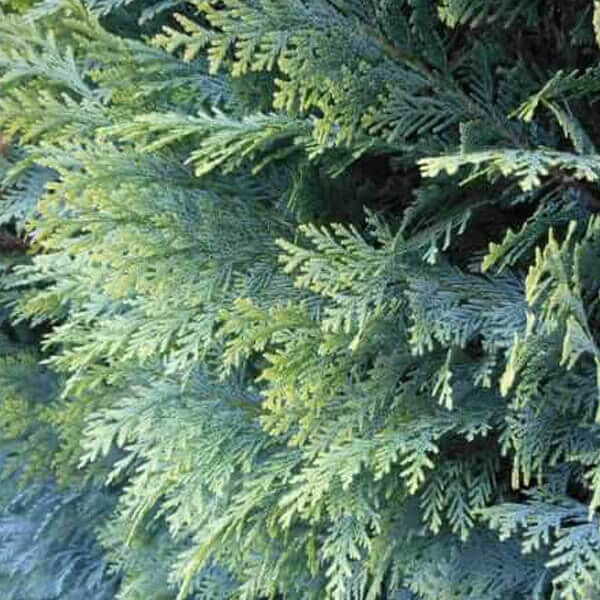Hedging Plants For Wind Protection
Hedging Plants For Wind Protection
Blog Article
Hedging Plants For Clay Soil
Improve your garden's attraction with lavish hedge ranges such as Yew (Taxus), Thuja, Laurel, Photinia, and Bamboo, commemorated for their structural integrity and ecological benefits.
Yew and Thuja supply evergreen coverage and winter season resilience, while Laurel uses rapid development and broad, fragrant leaves.
Photinia includes seasonal beauty with its dynamic red foliage, and Bamboo provides a low-maintenance, serene atmosphere.
These hedges enhance air quality, decrease noise, and develop tranquil, private spaces.
Appropriate planting, spacing, and upkeep ensure vigorous development and ecological harmony.
Check out how these lush varieties can elevate your garden's beauty and wellness.
Key Takeaways
Change Your Garden With Lush Hedge Varieties
- Select Yew for its dense, evergreen growth and unrivaled durability.
- Select Laurel for its quick growth and broad leaves, guaranteeing fast personal privacy.
- Choose Photinia for its dynamic seasonal foliage, which turns a striking dark red.
- Use Bamboo for a low-maintenance, winter-hardy hedge with aesthetic appeal.
- Space plants 2-3 per meter and prune routinely for optimum development and health.
Popular Hedge Plants
When changing a garden with lavish hedge ranges, it's important to consider popular hedge plants such as Yew, Thuja, Laurel, and Photinia due to their distinct qualities and benefits.
Yew (Taxus) is highly esteemed for its longevity and dense, green growth, making it a prime choice for withstanding landscapes.
Thuja is noted for its evergreen foliage and robust winter resilience.
Photinia adds seasonal vibrancy with red leaves that darken gradually, producing dynamic visual appeal.
Laurel uses quick development and aromatic, broad leaves, perfect for quick privacy.
Furthermore, Bamboo is an exceptional option for atmosphere, providing a low-maintenance, winter-hardy option that enhances the garden's visual with its classy, swaying walking sticks.
These choices deal with a variety of horticultural needs and choices.
Benefits of Garden Hedges
Garden hedges offer a multitude of advantages, making them an important addition to any landscape. These natural barriers are economical to implement and supply considerable wind security, enhancing air blood circulation and contributing to sound reduction. The dense foliage of hedges like Thuja and Beech guarantees privacy by blocking visibility, producing a serene and remote environment.
Hedges likewise play an essential function in microclimate guideline, providing a stable environment that fosters plant growth and reduces temperature fluctuations. Their intricate leaf structures filter toxins, enhancing air quality and adding to a much healthier garden community.
Furthermore, hedges master sound reduction, taking in and deflecting acoustic waves to lower ambient noise levels. This double functionality of offering both acoustic and visual privacy boosts the overall serenity and visual appeal of any garden.
Planting and Maintenance Tips
For an effective hedge, careful preparation of the planting area is important. Make sure the soil has proper pH and drain to support strong root advancement.
Space the plants appropriately for the selected types. Water the hedge frequently during its initial development stage, adjusting as needed with seasonal changes.
Implement a systematic insect control and illness avoidance technique, using chemical or organic treatments when necessary. Routinely examine for aphids, termites, and fungal infections.
Apply mulch to maintain wetness and reduce weeds. Seasonal pruning promotes thick development and air blood circulation, essential for plant health.
Following these guidelines will assist you cultivate a vibrant, well-kept hedge that boosts the appeal of your garden.
Spacing and Cutting Standards
Spacing and Cutting Guidelines
Appropriate spacing and cutting are crucial for cultivating healthy, aesthetically appealing hedges. Appropriate spacing makes sure each plant receives sufficient nutrients, light, and airflow.
Follow these guidelines for optimal hedge maintenance:
- Spacing: Position hedge plants 2-3 plants per meter to encourage robust development.
- Pruning Strategies: Routine pruning is vital for keeping preferred hedge height and shape. Trim new growth in summertime and cut down older wood during winter season.
- Seasonal Care: Change cutting techniques and schedules according to seasonal requirements to make sure plant health.
- Hedge Height: Regularly screen and trim to maintain the wanted hedge height and accomplish uniform aesthetic appeals.
Following these actions will guarantee your hedge flourishes, enhancing both the appeal and performance of your garden.
Choosing the Right Hedge
Picking the Right Hedge
Choosing the proper hedge includes evaluating aspects such as mature height, foliage density, and ecological durability. Effective hedge plant selection needs understanding each types' growth attributes and site-specific versatility.
For instance, Yew (Taxus) uses excellent longevity and dense development, while Thuja is noteworthy for its winter season resilience. In addition, thinking about upkeep requirements is vital; fast-growing species like Laurel or Privet need regular trimming, whereas low-maintenance alternatives like Bamboo or Ivy might be more suitable for those looking for minimal upkeep.
Ecological elements such as soil type, light schedule, and moisture conditions must likewise guide the selection procedure. This careful method makes sure the picked hedges will thrive, providing both visual and practical benefits to the garden landscape.
Shipment and Planting Guidance
To ensure your hedge plants prosper, they need to be provided by specialized couriers and planted promptly upon arrival.
Follow these important steps for successful planting:
- Soil Preparation: Enhance the soil with raw material to improve drainage and nutrient content.
- Planting Depth: Develop a trench two times the width and equivalent to the depth of the root ball.
- Watering Strategies: Water completely after planting, keeping the soil regularly wet however not filled.
- Mulching: Use a layer of mulch to maintain wetness and reduce weeds.
Consumer Assistance and Service
Offered the important function of prompt support in horticultural pursuits, our client support group is available 6 days a week through telephone, e-mail, and social networks to provide professional recommendations and quickly deal with any concerns. Their devotion to fast reaction times guarantees client complete satisfaction by dealing with queries related to plant health, optimum planting techniques, and maintenance schedules.

-----------------
Six days a week
Within 48 hours
Social Media
This comprehensive support system, enhanced by a stellar 9.3/ 10 client ranking, highlights our dedication to enhancing the gardening experience for each customer.
Regularly Asked Questions
For How Long Does It Take for Hedge Plants to Develop?
Hedge plants usually require one to three years to become completely developed, with the specific period differing by types and growing conditions.
Effective care during this crucial period is vital for robust development. Constant watering, alert weed control, and proper fertilizer application are essential in promoting strong root development.
For example, fast-growing species like Laurel may establish quicker, while slower-growing varieties such as Yew might take longer. Diligent maintenance accelerates the establishment procedure, leading to healthy and thick hedges.
What Are the very best Hedge Plants for Personal Privacy?
The concern of the very best hedge plants for privacy involves assessing evergreen and deciduous choices.
Evergreen hedges like Thuja, Laurel, and Cypress provide year-round coverage, guaranteeing continuous privacy.
In contrast, deciduous hedges such as Beech use seasonal personal privacy, shedding leaves in chillier months.
Key maintenance pointers for personal privacy hedges consist of regular trimming, fertilizing in spring, and correct spacing-- usually 2 to 3 plants per meter.
Furthermore, consistent watering and diligent weed elimination are important for promoting healthy, dense development.
Can Hedge Plants Draw In Wildlife to My Garden?
Yes, hedge plants can Article source attract wildlife to your garden by providing necessary benefits like shelter, food, and nesting sites, thereby boosting local biodiversity. Yew, holly, and laurel are exceptional for drawing in birds, while ivy supports a range of insects.
Nevertheless, it is necessary to keep in mind that there are some downsides, such as increased maintenance to handle pests and routine maintenance. Carefully choosing and keeping hedge varieties can assist stabilize these downsides and benefits, ultimately cultivating a vibrant and sustainable environment in your garden.
Are There Any Flowering Hedge Plants Available?
Yes, there are flowering hedge plants offered that can boost the beauty of your garden.
For example, Elaeagnus, also called Olive Willow, produces aromatic white flowers in the fall, adding a touch of beauty.
Photinia, another popular option, showcases lively red leaves that grow into a rich green, creating a dynamic visual impact throughout the seasons.
To make sure these plants thrive, it's essential to practice appropriate pruning methods and seasonal upkeep, such as cutting brand-new development in the summer season and cutting back in the winter.
These measures will help maintain the health and aesthetic appeal of your flowering hedges.
How Do I Prevent Pests in My Hedge Plants?
To prevent pests in hedge plants, employ natural pest control methods and maintain proper hedge care. Present beneficial insects like ladybugs, which prey on damaging bugs, to develop a well balanced environment.
Routinely examine your hedges for signs of invasion and immediately eliminate any affected parts to prevent the spread. Ensure the health of your hedges by using well balanced fertilizers and offering sufficient water.
Make use of mulching to retain soil wetness and correct spacing to reduce plant tension and promote robust development. These practices jointly help in lessening insect issues and maintaining a healthy hedge.
Conclusion
In essence, choosing the ideal hedge ranges such as Yew, Thuja, and Laurel can transform any garden into a peaceful haven. These plants supply year-round greenery, enhance visual appeal, and deal practical advantages like sound reduction and wind defense.
Correct planting methods, accurate spacing, constant watering, and seasonal trimming are vital for optimum growth.
Reputable delivery services and skilled client assistance guarantee a smooth experience from purchase to planting, making it simpler than ever to elevate your outdoor area.
Garden hedges use a multitude of advantages, making them an important addition to any landscape. These natural barriers are cost-efficient to carry out and offer considerable wind protection, boosting air flow and contributing to sound decrease. The dense foliage of hedges like Thuja and Beech makes sure personal privacy by obstructing presence, producing a serene and remote environment.

Pruning Techniques: Regular pruning is essential for maintaining wanted hedge height and shape. Cut brand-new development in summertime and cut back older wood during winter season.
Report this page